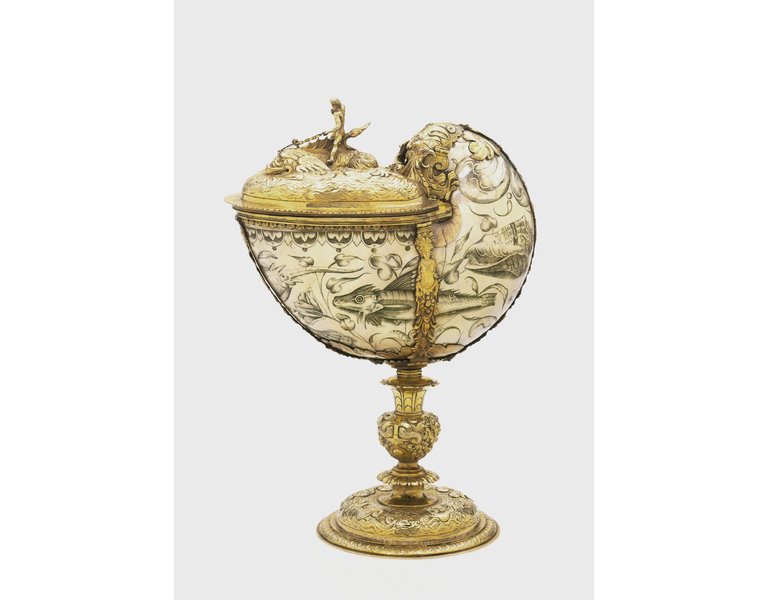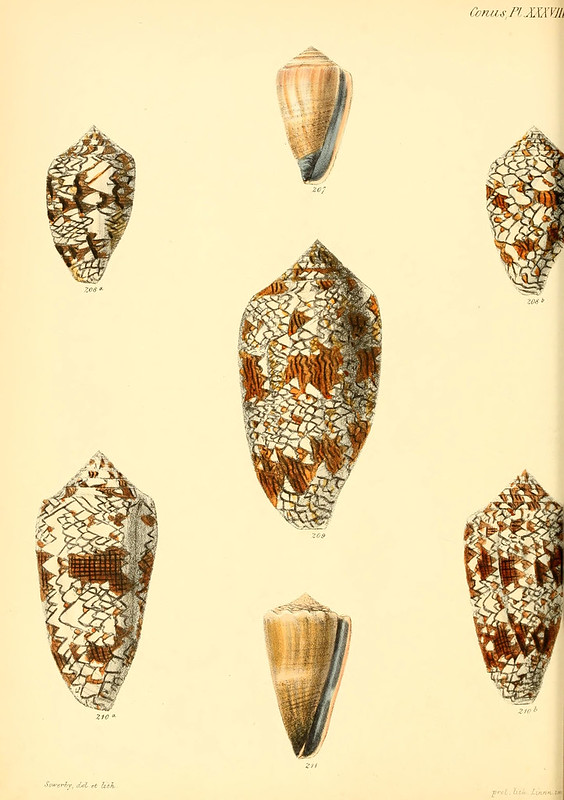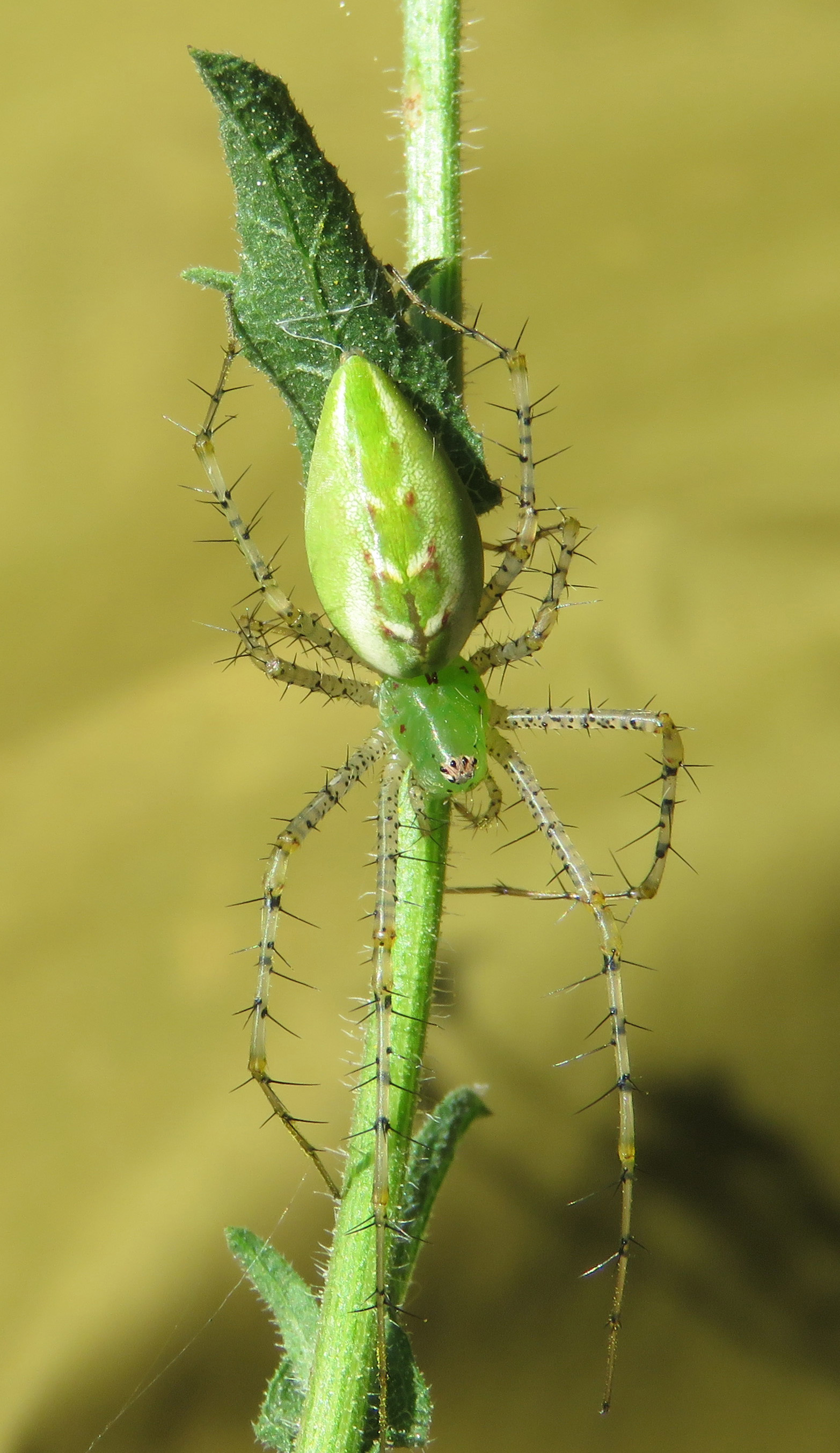Spectacular Spirals
I am part of an online art quilt group called The Endeavourers. When our current theme, Spirals, was announced, I thought it was a good time to dig into my Kindle inventory and read a book I had bought a while ago, called Spirals in Time: The Secret Life and Curious Afterlife of Seashells, by Helen Scales. I have written about the science and history parts of the book here on my nature blog, and in this post I am going to share some artistic resources I learned about through the book.
There is a whole chapter on sea silk, which is a fabric created from fibers that the Noble Pen Shell produces, to anchor itself in the waters of the Mediterranean onto rocks. These molluscs are usually about a foot long (30 cm) but can grow longer, and these anchoring filaments, known as byssus, can have fibers that are 2.4 inches long (6 cm). They are not particularly beautiful in their natural state, but a few people on Isola di Sant Antioco, an island off Sardinia, still know how to process the fibers into gleaming golden threads. Author Scales traveled to the island and met four people who can still work with sea silk. Since the number of pen shells has fallen precipitously, harvesting them is illegal, and three of the four can only get new fibers if a fisherman finds a dead shell and brings it to them.
The fourth, Chiara Vigo, was profiled in a story from the BBC. It was called The Last Surviving Sea Silk Seamstress, and you can read it here. Vigo supposedly knows a way to dive down and harvest fibers from living shells without harming them. I read the BBC story last year and found it interesting, if told in a slightly breathless-with-amazement tone. So I was interested to read Helen Scales’ account of the time she spent with Vigo, and her assessment of the claims of sustainability. It goes on for pages, and Scales thoughtfully analyzes many different aspects of the sea-silk process.
She can’t legally be taking whole pen shells, and her website states that her annual sea-silk harvest is around 600 grams (about 20 ounces). If she only trims their beards she must have to process thousands of shells every year (the full beards from 50 shells will yield only an ounce of sea-silk). She would then have to leave them alone for long enough to recover, assuming they survived. Maybe there are enough pen shells living in the water around Sant’Antioco to support a rotational harvest like this without impacting the population; but no one, except perhaps Chiara, really knows if this is the case…
Chiara is kindling a desire for sea-silk but she is also fiercely protective of its source along the shores of Sant’Antioco…The rarity of sea-silk fibres and the difficulty of obtaining them in a challenge Chiara faces, but at the same time it is the key to her fame and success. She clearly needs to protect the source of these delicate fibres together with the museum and the livelihood that rely on them. (from Chapter Six, somewhere around pp. 161- 167, but you know how hard it is to figure out your location in a Kindle book.)
If you are interested in sea-silk, Chiara Vigo has the Museo di Bisso website where you can learn more, and there is also a Project Sea-Silk that aims to inventory sea-silk objects already in museum collections. Pinna nobilis is on the right in the illustration below.
Alright, on to lighter subjects. Scales mentioned this huge 20-volume book called Conchologia Iconica, online at the Biodiversity Heritage Library, and it is a treasure. In the center of the page below is one of my new favorites for its name alone, Cloth-of-Gold Cone Snail, Conus textile. (Although I also learned from Scales’ book that many cone snails have toxins they can inject, so I would not pick one of these up without further research.)
Conus textile, Cloth-of-Gold Cone Snail
And another page, just for wishes and sighs:
As I mentioned, I was reading this book partly for ideas for an upcoming quilt art project on spirals. I never knew there were so many variations of spirals, and so many ways they could be embellished with either surface color patterns, 3-D crenelations and spikes, or both!And then, as if nature’s decoration of shells wasn’t enough, Scales also pointed out shells that were used as a base for artistic wonders. They were mounted in elaborate gold and silver settings, and sometimes etched with pictures of sea creatures. The one below is from the Victoria and Albert Museum. ( They have more that you can view online, along with history notes, but in complying with their terms of use, I can only use one.)

The Frewen Cup, made by goldsmith John Plummer, ca. 1650. © Victoria and Albert Museum, London
My own preference is for the natural beauty of shells, without all those ornate additions, but I do think the idea of a decorations within a spiral shape is interesting.
I enjoyed dipping into this book for a few pages at a time, and then taking my time to process everything I learned. I skipped over some of the very scientific parts, and I wished for lots more illustrations and diagrams, but I certainly got a lot out of it!


















Pingback: Beach Reading | Little Wild Streak
I have read about Vigo and yes, it is a little weird and wonderful. Those shells are to die for and I assume some of them were! The Frewen cup, wonder if it was used for anything other than the beauty of it. Awaiting your always brilliant designs.
Wow, no pressure now! 🙂
The V & A says that these cups were popular from the 14th century on, and for their beauty but also for supposed magical qualities. It would be interesting to know how that was supposed to work!
Very interesting! I’ll look forward to seeing your project evolve.
Me too!
I always enjoy wandering down the side trails of information, even if my final project doesn’t capture my resulting big ideas! 🙂
You certainly are driven by curiosity! The story about sea silk is so interesting–made me think a little of the lotus weavers in Myanmar, although their raw material is somewhat more accessible. I’ll be interested to see where this research takes you, in terms of your art quilt!
Well, I like to read the facts that other people’s curiosity has turned up, anyway. I get these notices from BookBub about $3 books, and I think, “Oh, I know nothing whatever about that area and I probably should — it’s only $3, I’m bound to learn $3 worth,” and then I am amazed at all I find out, and wonder how I went so long in total ignorance of the topic! 🙂
Thanks for sharing this. So interesting. I also love that you have a nature blog! My favourite uncle is a professor of entomology. One of my favourite things is picking his and his wife’s brains about all sorts of wild and wonderful things in nature as I have never met people who know more about it or who have taken wilder trips. It always makes me wish I had gone into the natural sciences. Good luck with the designing!
Yes, I wish I had gotten interested in the sciences earlier! I think that there are much better science books being written now for the layperson, they don’t all sound so text-booky as they did when I was in school. Maybe I would have gotten interested earlier if I had had better choices of reading material back then.
I would love to know an entomologist. I take pictures of insects but I have such a hard time identifying them. I go on BugGuide.net and get people to help me, and then I read about the insects and their life histories are so amazing!
I know for me the aversion to science was because I had old, sexist teachers in physics and biology who weren’t encouraging of girls in science at all (in fact the opposite). I only went into math because my teacher was a woman and a real champion and encouraged that I explore my abilities. Otherwise, I wouldn’t have had the confidence then. Oh well! My uncle is a fascinating guy and also a photographer. I enjoy his company so much. He is a fly expert and has written a huge tome on those so a go-to guy for that, although now apparently he is writing a book on beetles. I envy him his focus and dedication to one thing.
The patterns on the cloth-of-gold cone snail are so intriguing. You could make a quilt just using that.
I know, I love the unpredictable variations. That is something I am really interested in doing quilt-wise.
I learn so much from both your blogs…when they appear in my inbox, all else is forgotten till I have read them thoroughly. I knew nothing of sea silk, but I’m totally intrigued. It seems unfair that we only get one lifetime when there are so many wondrous discoveries yet to be made and to learn about…
I am deinitely in the gathering crowd waiting to see just what you create this time.. but patiently. I’m always in awe of what you achieve.,
Wow, Chris, thank you so much! Your compliments mean so much knowing as I do how prolifically and well you write, and how knowledgeable you are about all the steps of textile processing, from your grandmother’s work! I am glad I could introduce you to a topic that is new for you!
I don’t know about knowledgeable, but deeply interested.
There are so many topics that would be new to me, I have a great curiousity, which my Dad kept telling me would be my undoing… yet he was just the same!
It’s good to learn something new every day, and I certainly never heard of sea silk!
This is a fascinating post and the BBC link was very interesting. It is a wonder to me that anyone ever discovered this and evolved the techniques. It’s a great shame that the clam is endangered. I also enjoyed your other shell illustrations. The embellished cup is amazing but, I agree with you that shells are more beautiful in their natural state. You’ve persuaded me that it would not be hard to make a lifetime’s work of creating quilts inspired by sea shells and I’m very much looking forward to seeing how your spiral quilt will take shape 🙂
Thank you! Living close to the Gulf of Mexico as I do, after reading that book I was ashamed that I never gave seashells much thought before! But you are right, they could definitely inspire a lifetime of quilts!
I’m so glad to know of your other blog, which I’d somehow missed. I’m signed up now, and look forward to some enjoyable reading.
I have a lightning whelk I picked up in far south Texas, at Boca Chica. My gr-gr-grandfather ended up there during the Civil War, and marched with his regiment (the 34th Iowa) up the coast, through Matagorda, before finally mustering out in Liberty. It’s been interesting to trace his steps, from Helena, Arkansas, to Texas, back to Iowa, and then back to Texas again. It was his own sort of spiral!
Wow, that is so interesting! I can’t imagine what it must have been like to march on the Texas coast back then, it must have been miserable! And then, mustering out at Liberty! He must have had to turn around and go down to Galveston to catch a ship out of here. The Big Thicket was practically impenetrable back then so I don’t think he would have walked out to Louisiana. Do you know?
My understanding is that he went north, straight back to Iowa. At one point he’d been involved in accompanying Confederate prisoners to Chicago, through the Atchafalaya, so I imagine he’d had enough of Louisiana — that’s where most of his regiment’s losses came, from disease.
He was a fairly self-sufficient sort. When the war broke out, he was panning for gold in Colorado, and came back to Iowa to enlist. And after the war, he and his new bride came back to Texas for a time — they lived on the prairie east of Melissa, which is east of DFW. After the moved back to Iowa to begin farming, one of my gr-gr-grandma’s friends wrote letters to her, and I have some of that correspondence. Some day I need to do something with all that — especially since I have the complete itinerary of the 34th Iowa that an acquaintance who’s a Civil War expert put together for me.
Oh, that sounds amazing. What a life he and his wife had. I hope you can get it all published, at least in a form for your family.
I have been working on the family archives from my husband’s family. I am scanning in all the letters that are easy to read, and then transcribing some of the ones that have really small cramped handwriting, so we can all read them more easily. I just learned about some dictation software I am going to try, so I can just read the letters aloud and get them in a legible form.
This was a most interesting and educational blog. I learn so much while researching ideas for The Endeavourers’ projects! I can’t wait to see what your piece looks like.
Thanks! I did get finished and I have that post scheduled to go on August 1! I had fun working on it, but it is no masterpiece, just light-hearted. I am looking forward to seeing everyone’s pieces too!